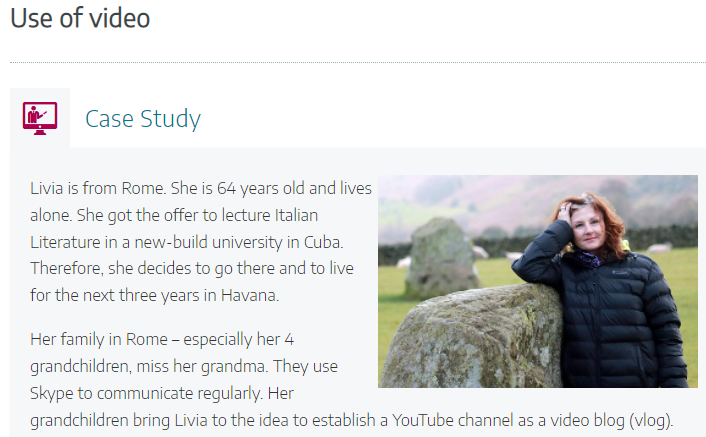The DISK training course consists of 15 modules with different topics. The topics were selected to match the identified needs of the target groups. Case studies were implemented as specific means of training, using eXe-learning as the technical tool.
During the first considerations about the course structure and the used approach, the idea occurred to use case studies as a means of self-directed and learner-centered training.
Why case studies?
Case studies can be defined as intensive studies about one person or individual, or a group of people, or a unit, which are aimed to generalize over several units. In our courses, we used the case study as an “opener” to the topic: A specific situation has been described, and the learner could either collect additional information about the case or try to find solutions for the given case. Here is an example dealing with the needs of Livia, who goes to Cuba (from Rome) to teach there “Italian Language and Literature”.
Here is the link to check the case study: Livia and her video problem (This link opens in a new window).
This case study asks the user to develop an idea and – after this – offers the user a possible solution with several recommendations to take into account.
This training unit is excellent to be developed in pairs and further discussed in the group learning space. The learners can exchange and compare the different ideas, evaluate them and develop them further (these are typical steps foreseen in the group learning space of Flipped Learning 3.0 and correspond to the “Higher Blooms” [1]).
Feedback from Learners
The trainees of the first courses gave positive feedback: They mentioned that the situations are described logically and touched the participants personally. Each of the situations presented seemed familiar and comprehensible to the learners.
It is precisely this circumstance that enables them to immerse themselves in the problem and offer a workable solution.
Technical implementation
For the technical implementation, eXe-Learning has been used. This open and freeware tool is maintained by a group affiliated with the Spanish Ministry of Education and is well-supported and regularly updated and enhanced.
Link: exelearning.net
______________
[1] The term “Higher Blooms” origins from Flipped Learning 3.0 and refers to Bloom’s Taxonomy (which is revised in FL 3.0 and reshaped). To read more about Bloom’s Taxonomy in Flipped learning 3.0 you may have a closer Look here: The-flipped-learning-3-0-framework/

